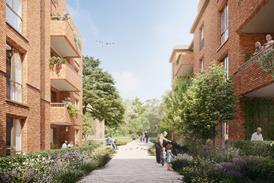With the built environment responsible for around 40% of global emissions, it’s an obvious sector for decarbonisation – so why don’t our tax rules do more to incentivise it?

The UK has made great strides in attempting to decarbonise its buildings and the construction process through regulation. However, the tax system has failed to support owners and occupiers, possibly even incentivising higher-carbon activities by penalising more carbon-friendly approaches. With the Spring Statement around the corner, it’s an opportune time to make the case for incentivising decarbonisation.
The only ‘green’ relief of note on the UK statute now is the 150% deduction for the remediation of contaminated land, encouraging development of brownfield sites. In withdrawing enhanced capital allowances (ECA) in March 2020, the government removed a 100% tax deduction for investing in new energy and water-saving technologies. The ECA regime was imperfect but did encourage developers to actively consider carbon-efficient measures. The structures and buildings allowance and increased annual investment allowance, together with the temporary super-deduction, increase and accelerate available capital allowances for non-residential properties but are agnostic in terms of carbon.
When considering value added tax (VAT), the position is even more counter-intuitive. New-build residential development is ordinarily zero-rated for VAT, whereas refurbishment and alterations are generally standard-rated. The preferred route to net zero carbon is to work with existing buildings, repurposing where possible: demolition and reconstruction are highly carbon-intensive processes. Surprisingly, the VAT rules effectively incentivise developers to demolish existing buildings to secure the zero rate, rather than retrofitting existing stock – an approach that seems incongruous with the stated aim of the government. While a reduced VAT rate of 5% does apply for selected alteration activities, the exempt nature of property transactions can ultimately result in additional costs of up to 20%, where VAT paid cannot be recovered.
Global events have clearly sidelined many plans, including what the government can afford to do, but a broader overhaul of the fiscal rules is necessary and should strive to be cost-neutral. Tax relief for ‘greener’ buildings ought to be balanced through the taxation of assets with poorer carbon performance.
Levelling the VAT playing field together with dedicated green allowances is the logical starting point, but, for tax policy to truly support the government’s net zero ambitions, a direct link between tax on development activity and associated carbon needs to be established.
Measurement is critical to any such approach. Base data for carbon must be well-defined, easily measurable and readily accessible to determine relativity, gauging improvements in performance. Existing measures, such as EPC ratings, focus on theoretical energy consumption. While they can be converted to operational carbon, they are not yet sophisticated enough to assess the carbon embedded in the construction process. Therefore, while they can operate as an acceptable measure of improvement (‘before’ versus ‘after’) they are not necessarily sufficiently thorough to assess the improvements required to achieve net zero carbon targets. Two step changes are needed: first, a more detailed quantitative focus on measuring actual operational energy, through established platforms such as NABERS; and second, incorporating embodied construction carbon data.
The combined measure would ultimately provide a robust and reliable springboard upon which to develop a more balanced system of both taxation and incentivisation around carbon.
In the short term, there are some relatively easy wins that could help incentivise taxpayers’ positive behaviours towards net zero carbon through the mitigation of their initial capital spend. These include extending the zero rate for VAT to refurbishments of residential property, temporarily increasing the deduction for the remediation of contaminated land to 200%; and creating a ‘green’ capital allowance to provide an accelerated deduction for active and passive low-carbon measures.
Such incentives could be a tipping point for those developers not yet putting net zero at the heart of their schemes.
By Paul Farey, a director in AECOM’s fiscal incentives team






























No comments yet